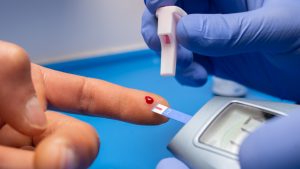Maintaining a balanced diet is essential for leading a full and healthy life, especially when it comes to managing blood glucose levels. While it may seem challenging, making informed choices is not only possible but can also be an opportunity to explore new flavors and recipes. In this article, we present a detailed guide on foods that are beneficial to consider reducing and why doing so can contribute to optimal well-being.
1. Refined Carbohydrates and Added Sugars
Why? Refined carbohydrates, found in foods like white bread, pastries, and cookies, along with added sugars in sodas and candies, are known to cause rapid fluctuations in blood glucose levels. Studies have shown that these foods can significantly raise blood sugar levels, leading to ineffective glucose management.
Relevant Research: A study published in The American Journal of Clinical Nutrition found that a diet high in refined carbohydrates can increase the risk of developing insulin resistance and type 2 diabetes.
Healthy Alternatives: Opt for whole grains like oatmeal, brown rice, and whole-grain bread. These foods have a lower glycemic index, meaning they are digested more slowly and help maintain more stable glucose levels. Additionally, fresh fruits like apples and berries offer natural sweetness without the sugar spikes associated with refined products.
2. Foods High in Saturated Fats
Why? Saturated fats, found in foods like processed meats (bacon, sausages) and fried foods, can contribute to insulin resistance. Insulin resistance makes it more difficult to control blood glucose levels, as the body needs more insulin to handle the same amount of sugar.
Relevant Research: According to research published in Diabetes Care, diets high in saturated fats are associated with increased insulin resistance and a higher risk of type 2 diabetes.
Healthy Alternatives: Incorporate healthy fats such as those found in avocados, nuts, and olive oil. These fats are not only heart-healthy but can also improve insulin sensitivity. Additionally, fatty fish like salmon and trout provide omega-3 fatty acids that have anti-inflammatory effects and benefits for cardiovascular health.
3. Sugary Beverages
Why? Sugary beverages, such as sodas, juices with added sugar, and energy drinks, can cause rapid increases in blood glucose levels due to their high sugar content and empty calories. These drinks often lack essential nutrients and can contribute to weight gain.
Relevant Research: A study in The Lancet found that the consumption of sugary beverages is associated with a higher risk of type 2 diabetes and obesity.
Healthy Alternatives: Opt for water, unsweetened herbal teas, or sparkling water with a splash of lemon to stay hydrated without adding sugars. Sugar-free and calorie-free beverages are a great way to enjoy hydration without the negative impact of sugar.
4. High Glycemic Load Foods
Why? Foods with a high glycemic load, such as french fries, sugary cereals, and certain types of white rice, can cause rapid increases in blood glucose levels. This is because these foods break down quickly into sugar in the body.
Relevant Research: An article in the Journal of Nutrition suggests that a diet high in high glycemic load foods can lead to a greater risk of type 2 diabetes and metabolic issues.
Healthy Alternatives: Choose non-starchy vegetables like broccoli, spinach, and bell peppers, and whole grains like quinoa and farro. These foods have a more gradual impact on glucose levels due to their low glycemic index and high fiber content.
5. Full-Fat Dairy Products
Why? Full-fat dairy products can contain saturated fats and additional calories, which can influence glucose control and body weight. Excess fat in the diet can interfere with insulin effectiveness.
Relevant Research: A study published in The American Journal of Clinical Nutrition suggests that the consumption of full-fat dairy products may be associated with a higher risk of type 2 diabetes due to their high saturated fat content.
Healthy Alternatives: Choose low-fat or fat-free versions, such as unsweetened almond or soy milk. These options provide essential calcium and other nutrients without the additional calories and saturated fats found in full-fat dairy products.
Tips for a Balanced Diet
Plan Your Meals: Preparing your meals in advance allows you to better control ingredients and portions. Use meal planning apps to make the process easier.
Read Labels: Pay attention to nutritional labels to choose products with less added sugars and saturated fats. Look for foods with a low glycemic index and high fiber content.
Incorporate Variety: A diverse diet rich in fruits, vegetables, lean proteins, and whole grains will help you maintain an optimal balance of nutrients. Experiment with new recipes and foods to keep your diet interesting and nutritious.
Consult a Professional: It’s always helpful to talk with a nutritionist or healthcare professional to create a personalized eating plan. They can help adjust your dietary habits and provide specific advice for your situation.
Conclusion
It’s not about prohibitions but about making choices that promote long-term well-being. Reducing certain foods and opting for healthy alternatives can help you maintain optimal glucose balance and contribute to a more vibrant and energetic life. By adopting healthy eating habits, you’ll be on the path to a more balanced and fulfilling lifestyle.
E4 Helps you:
At E4, we’re dedicated to revolutionizing how people manage type 2 diabetes through our innovative E4 Alive program. Our team of specialists has joined forces to create a comprehensive solution aimed at empowering individuals to take charge of their health journey. With personalized support and resources tailored to each person’s unique needs, we make managing diabetes simpler and more effective than ever before.
E4 Alive offers a range of tools and resources to help you better understand and control your blood sugar levels. Our program provides personalized guidance to create a healthy eating plan and integrate regular physical activity into your daily routine. Plus, you’ll have access to a supportive community of individuals who understand your challenges and are there to offer encouragement and guidance every step of the way.
By joining E4 Alive, you can effectively manage your blood glucose levels, improve long-term glycemic control, reduce your risk of diabetes-related complications, and enhance your overall quality of life. It’s not just a program; it’s an opportunity to reclaim your health and vitality. Ready to start your journey to better health? Visit THIS PAGE to learn more about E4 Diabetes Solutions and the E4 Alive program.
To learn more about E4 Diabetes Solutions and the E4 Alive program, visit THIS PAGE.

Type 2 Diabetes: Is It Really Reversible?
A recent National Geographic article [link] explores how type 2 diabetes could be reversible with the right approaches. This condition, which affects millions of people worldwide, has long been considered a chronic and progressive disease. However, recent research challenges this perception and suggests that with lifestyle changes and the right approach, remission is possible. The

How Do GLP-1 Drugs Compare? A Breakdown of Ozempic, Mounjaro, and Trulicity
GLP-1 receptor agonists have revolutionized diabetes management, with drugs like Ozempic, Mounjaro, and Trulicity leading the market. But how do these medications compare in terms of effectiveness, side effects, and patient outcomes? Let’s explore their differences and what they mean for diabetes patients. Understanding GLP-1 Medications GLP-1 receptor agonists mimic a natural hormone that helps

Why Has Medicare Spending on Diabetes Medications Skyrocketed in 5 Years?
In the past five years, Medicare spending on diabetes medications has increased nearly fivefold, reaching $35.8 billion in 2023. This surge has been primarily driven by the growing use of GLP-1 drugs such as Ozempic, Mounjaro, and Trulicity. But what is behind this cost escalation, and how does it affect patients and the U.S. healthcare

The Gut Microbiota and Blood Sugar Control: A Hidden Connection
The human gut is home to trillions of bacteria that play a crucial role in digestion, immune function, and even metabolism. Recent research has revealed a fascinating link between the gut microbiota and blood sugar regulation, shedding light on how the balance of microbes in our intestines can influence diabetes risk and overall metabolic health.

The Dawn Phenomenon: Why Blood Sugar Rises While You Sleep
For many people with diabetes, waking up with high blood sugar levels can be frustrating—especially if they didn’t eat anything overnight. This early-morning spike in blood glucose is known as the Dawn Phenomenon, and it happens due to natural hormonal changes in the body. But why does it occur, and how can it be managed?

The Influence of Red Light on Blood: Can It Improve Diabetes?
Type 2 diabetes is a metabolic disease characterized by insulin resistance and elevated blood glucose levels. In the search for complementary alternatives to improve glycemic control, red light therapy has gained attention due to its potential to enhance circulation, reduce inflammation, and optimize cellular function. But what does science say about it? ✨ What is

